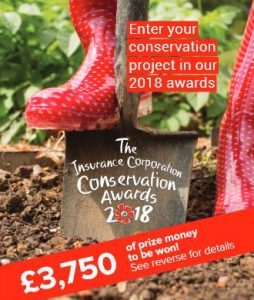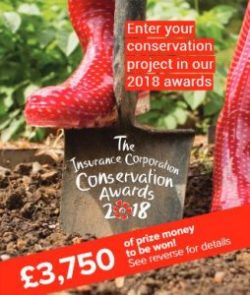
One of this year’s chicks in need of a name. Photo by Liz Corry.
By Liz Corry
Zoo choughs
Keepers were in shock this month after the loss of two choughs in the Zoo. On 8th August a male was discovered by a keeper on the floor of the aviary. From his physical appearance, staff assumed the chough had been in a fight with Tristan, the only other male in the group, and lost.

The male chough had x-rays taken to assess injuries. Photo by Liz Corry.
When a second chough, Issy our breeding female, became ill we suspected there was more to it. The male’s condition gradually worsened despite efforts and eventually the bird had to be euthanased. Sadly, the female died a few days later.
Andrew Routh, Head Vet, explains “We took blood samples that were analysed in-house, at our usual diagnostic laboratory in the UK and, additionally, forwarded on by them to a specialist also in the UK. We will be re-sampling the remaining three birds in the collection. Full post mortem examinations were carried out on both birds and a comprehensive set of tissues from each sent for analysis by board-certified pathologists in the UK. No conclusions yet on the cause though further tests are pending.”
The remaining three birds have been taken off-show to individual enclosures for close monitoring. So far, they have shown no signs of ill health, are eating well and chatting loudly. Gianna, the Italian diva that she is, is a tad miffed we have taken her away from her public. Hopefully we can return them soon at which point the chough keeper talks will resume.
Wild chicks update
The last unringed wild chick was caught up on 1st August to be fitted with leg rings. Whilst in the hand, the chick made noises we’ve never heard before. And no, it wasn’t because we were squeezing too hard! There is debate as to whether the sounds were more gull-like or goose-like. Either way the ‘meeping’ chick became the first of the 2018 group to be named – Beaker.

The last of 2018’s chicks to be ringed (left!) and his namesake Beaker (right) – both emit unusual sounds. Photo by Elin Cunningham.
Two weeks later the DNA results returned form the UK lab. Whilst teenagers across the land were jumping for joy over their exam results, we beamed with delight upon hearing we have five males and four females.
This is great news for the Jersey population because:
(1) The sex ratio for wild-hatched choughs in Jersey is now 1:1. For the entire flock, it is more like three females for every two males. Not quite as catchy. Still a good result;
and
(2) We can name the new chicks! Aside from Beaker we had names lined up for Dusty’s chicks. In honour of Ronez’s assistance with the project, the three boys are now known as Clem (who found the chicks), Toby, and Osbourne (Ossy for short).
Tempting as it might be to call Beaker’s sister Dr Honeydew, her name is still open to debate. We are still searching for appropriate Jersey-related names for four females and a male. Please use the comments box to put forward any suggestions.
| Parents | Chicks | ||
| Dusty & Chickay | Clem (male) | Toby (male) | Ossy (male) |
| Kevin & Bean | Green (female) | Orange (female) | |
| Lee & Caûvette | Yellow (female) | Black (male) | |
| Q & Flieur | Mauve (female) | Beaker (male) |

The 2018 chicks now have the adult colouring in their legs and bills (adult behind the chick). Photo by Liz Corry.
Spreading their wings
The flock have shown a distinct change in behaviour this month. After the chaos over June and July when chicks had to be fed and wild food supplies had dried up, the adults are relaxing back into their normal routines. One fortunate member of the public snapped a photo of 30 choughs flying over Plémont. On the back of this, social media reported seeing ‘large’ groups back at Les Landes.

Choughs flying over Plémont headland. Photo by Anne Gray.
The change is partly due to the chicks becoming independent and feeding themselves.
A major factor will be the rise in wild food supplies thanks to the shift in weather. Leatherjackets in the soil and dung-loving insects will provide the calories needed to fly back and forth around the north-west coast.
We are seeing an average of 24 choughs at the supplemental feeds. They appear to be the same individuals; all families bar Lee and Caûvette‘s making up half the group. Their willingness to enter the aviary has taken a knock since the recent spate of catch-ups. We have to reassure them that entering the aviary does not always result in humans waving nets around.
Having a wild food source around provides them with options. Great for them. For staff not so much, as it means the birds are less likely to hang around the aviary. Health screening, weight checks etc. are not as easy.

Chough chick photographed back in July at Sorel. Photo by Peter G. Hiatt.
Now you sheep me, now you don’t
Lack of choughs at the aviary is being compensated by appearances of sheep within the perimeter fence. The first sighting was on one of the hottest, driest days of the summer. A young sheep was happily curled up in the shade of the aviary sheds munching on lush green grass whilst the others were lined up along the hedgerows competing for shade. Much to the sheep’s dismay it was returned to the flock.

The next day it was back! And once again returned to the flock. A day or so later a different sheep was present. Neither student or I could figure out how on earth they were getting through the locked gate and wire fencing.
Days passed, sheep were absent. Or so we thought. Camera-trap footage to investigate chough roost activity threw up a different mystery. A ewe present in the morning, had gone by the afternoon. Clearly they were playing games with us.

Camera trap image inside the aviary showing a sheep within the aviary perimeter.
They upped the stakes in the last days of August. Having hidden in the bracken, ‘Houdini’ found her way inside the aviary. True magicians never reveal their secrets – except when their hooves and horns knocking equipment over in the keeper-porch give them away. I had left both doors open, not expecting her to follow me in, but it meant she could safely hang out in the aviary until the shepherd reached Sorel. And saved me a job with the lawnmower.
Yet another prime example of how the conservation of one species can benefit others.





























































 Staying on a funding and monitoring theme, we are very honoured to hear that Ronez Quarry have nominated the chough project for the
Staying on a funding and monitoring theme, we are very honoured to hear that Ronez Quarry have nominated the chough project for the 






































